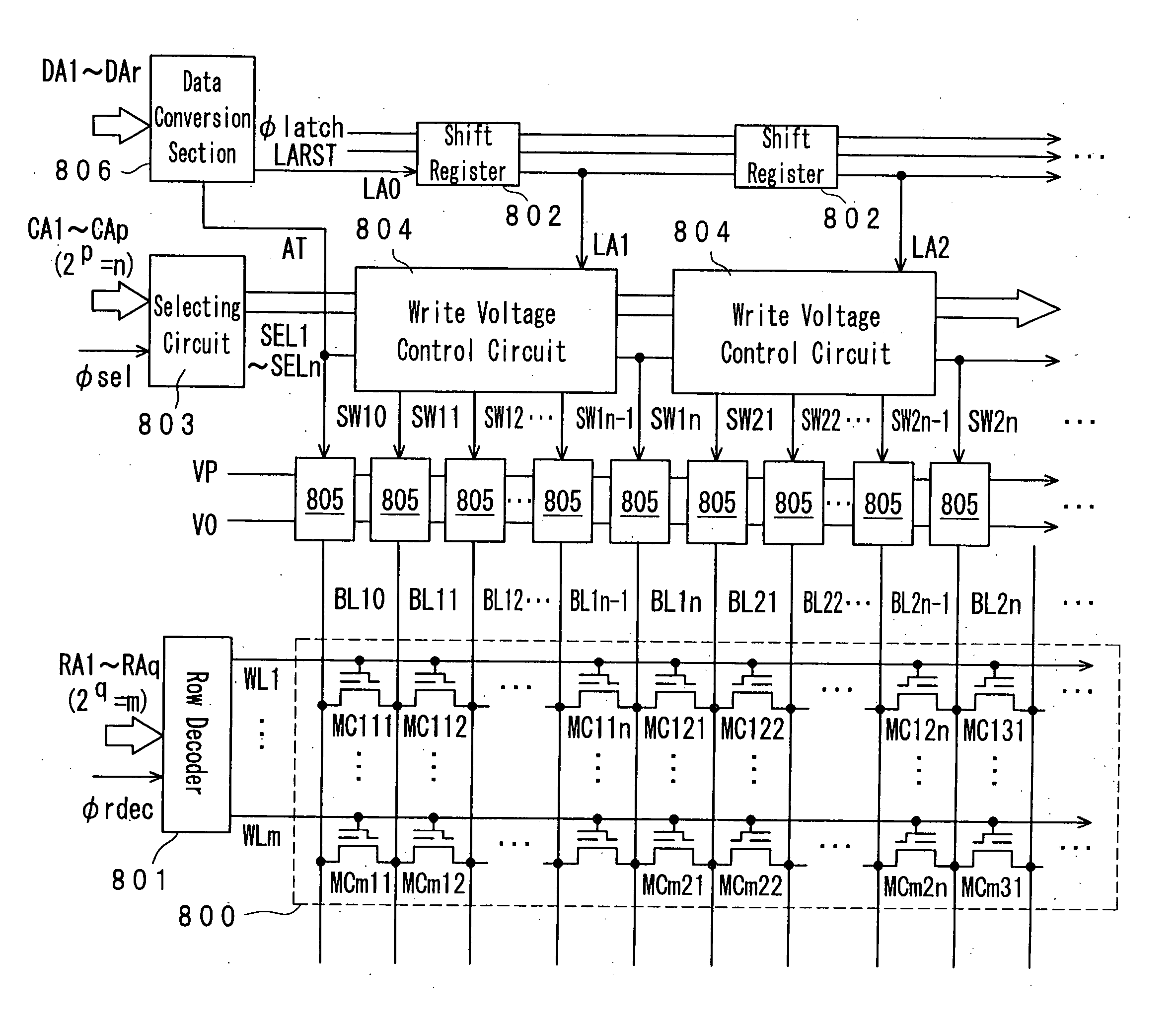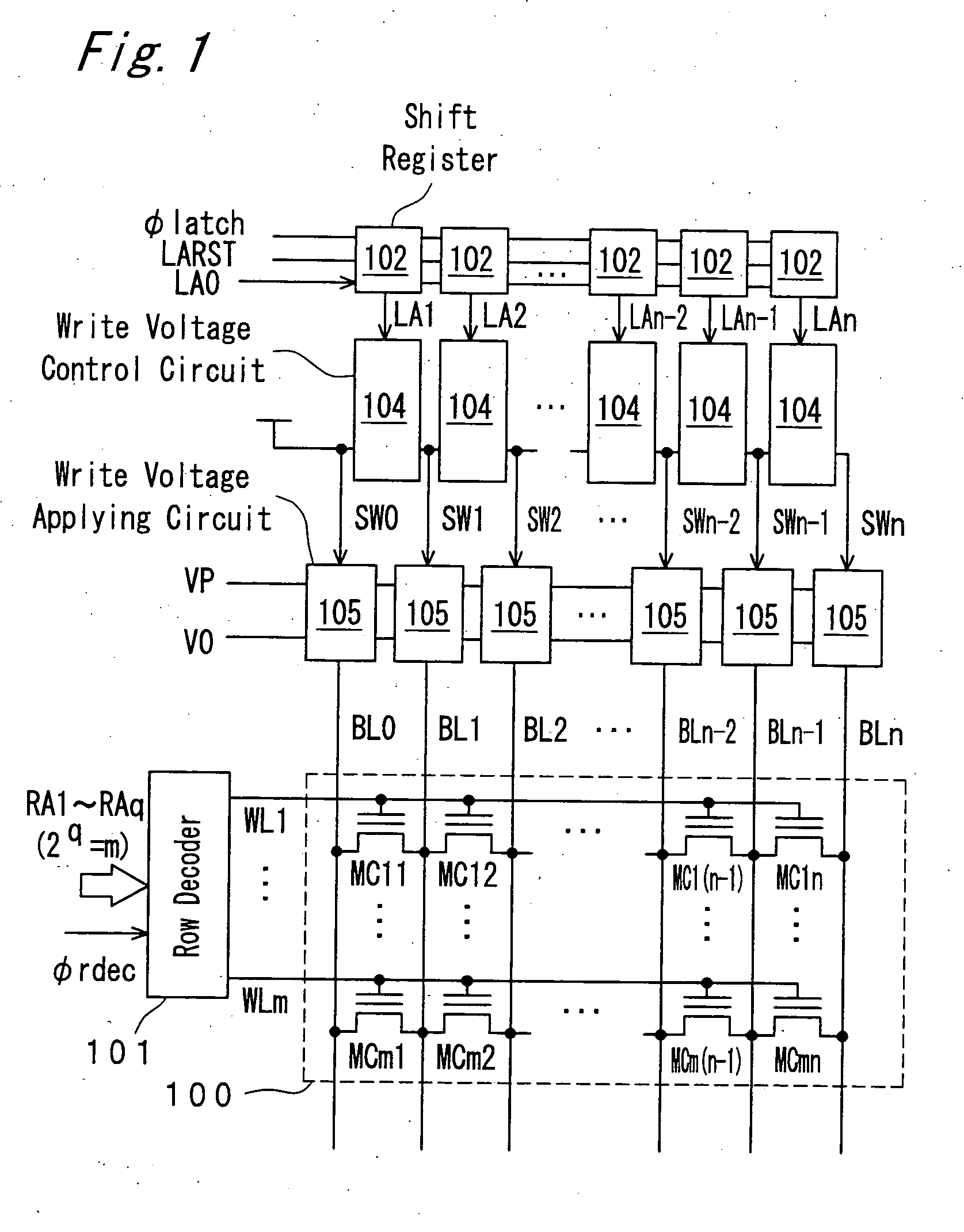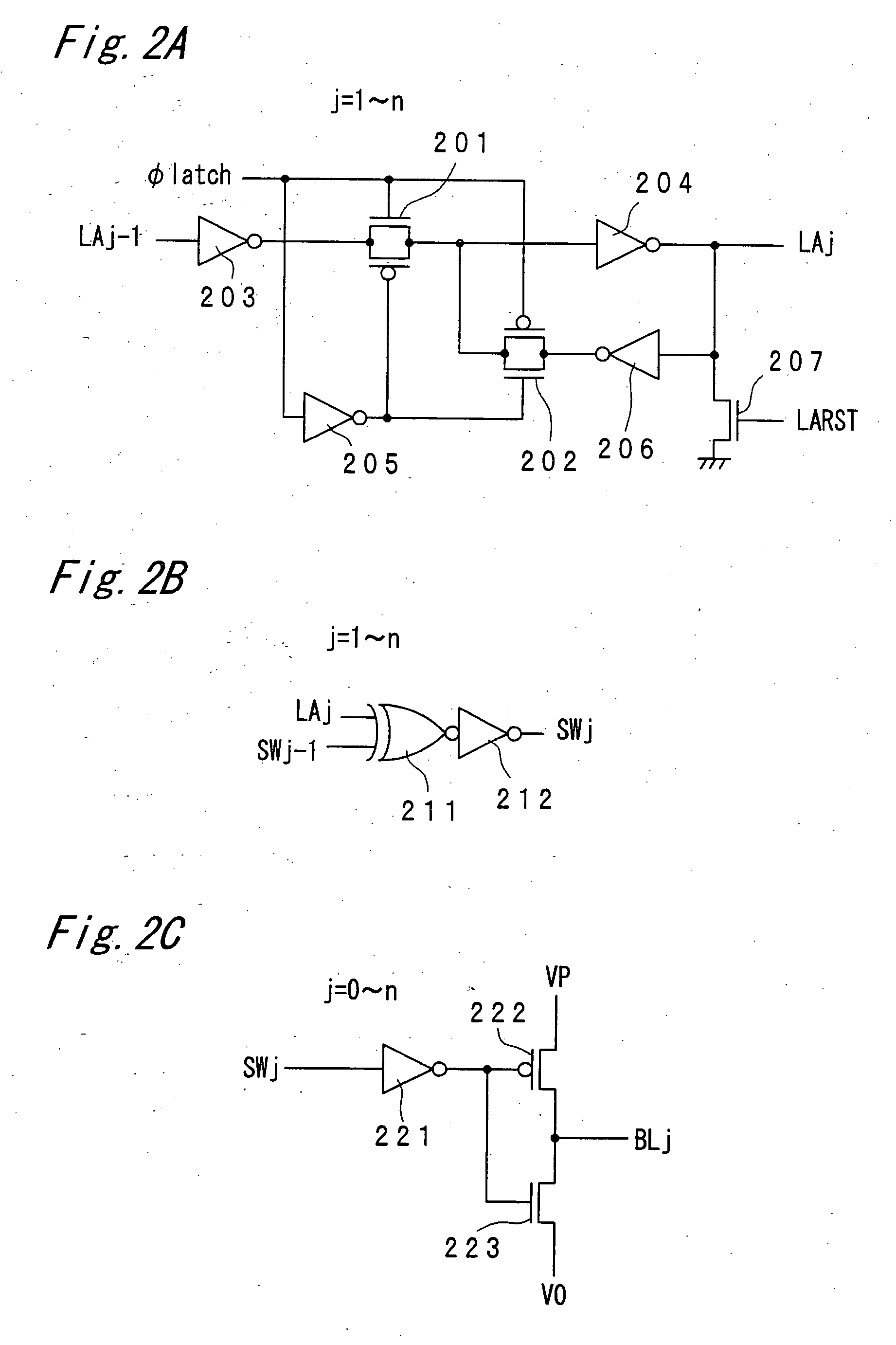Semiconductor memory device and electronic equipment
a memory device and semiconductor technology, applied in static storage, digital storage, instruments, etc., can solve the problems of increasing the chip area on the contrary, affecting the operation of the memory device, so as to achieve the effect of simple configuration, high accuracy, and reliable electronic equipmen
- Summary
- Abstract
- Description
- Claims
- Application Information
AI Technical Summary
Benefits of technology
Problems solved by technology
Method used
Image
Examples
first embodiment
[0139]FIG. 1 is a block diagram showing a semiconductor memory device of the first embodiment of the present invention. FIGS. 2A and 2C are circuit diagrams showing an example of the peripheral circuits of the semiconductor memory device.
[0140] As shown in FIG. 1, this semiconductor memory device has a memory cell array 100 in which a plurality of nonvolatile memory cells MC11, MC12, - - - , MC1(n−1), MC1n, - - - , MCm(n−1), and MCmn are arranged in the form of a matrix. In this memory cell array 100, a plurality of word lines WL1 to WLm align in the column direction, and each of the word lines extends in the row direction and is connected with the control gates of the memory cells of a corresponding row. Furthermore, in the memory cell array 100, a plurality of bit lines BL0 to BLn align in the row direction, and each of the bit lines extends in the column direction and is connected with the input and output terminals, i.e., sources and drains of the memory cells of a correspondin...
second embodiment
[0152]FIG. 4 is a block diagram showing a semiconductor memory device of a second embodiment of the present invention, and FIGS. 5 and 6 are circuit diagrams showing an example of the peripheral circuits of the semiconductor memory device.
[0153] As shown in FIG. 4, this semiconductor memory device has a memory cell array 400 in which a plurality of nonvolatile memory cells MC111, MC112, - - - , MC11(n−1), MC11n, MC121, - - - , MCm11, - - - , MCm2n, - - - , and MCmrn are arranged in the form of a matrix. This memory cell array 400 has r areas each including n memory cells in the row direction. In this memory cell array 400, a plurality of word lines WL1 to WLm are arranged in the column direction, and each of the word lines extends in the row direction and is connected with the control gates of the memory cells aligning in the same row. Furthermore, in the memory cell array 400, a plurality of bit lines BL10 to BLrn are arranged in the row direction. Each of bit lines extends in the...
third embodiment
[0166]FIG. 8 is a block diagram showing a semiconductor memory device of a third embodiment of the present invention.
[0167] The semiconductor memory device of this embodiment has a memory cell array 800 in which a plurality of nonvolatile memory cells MC111, MC112, - - - , MC11(n−1), MC11n, MC121, - - - , MCm11, - - - , MCm2n, - - - , and MCmrn are arranged in the form of a matrix. The memory cells constituting the memory cell array are asymmetrical memory cells which require that at writing to a memory cell, a voltage higher than a voltage applied to one of two bit lines connected with the memory cell be applied to the other bit line. In this embodiment, the memory cell array has r areas each including n memory cells in the row direction, which are arranged in such a manner that memory cells in adjacent areas have properties opposite to each other. Specifically, when data 1 is written into the memory cell MC111 nearest the row decoder 801 in FIG. 8, it is necessary to apply VP to ...
PUM
 Login to View More
Login to View More Abstract
Description
Claims
Application Information
 Login to View More
Login to View More - R&D
- Intellectual Property
- Life Sciences
- Materials
- Tech Scout
- Unparalleled Data Quality
- Higher Quality Content
- 60% Fewer Hallucinations
Browse by: Latest US Patents, China's latest patents, Technical Efficacy Thesaurus, Application Domain, Technology Topic, Popular Technical Reports.
© 2025 PatSnap. All rights reserved.Legal|Privacy policy|Modern Slavery Act Transparency Statement|Sitemap|About US| Contact US: help@patsnap.com



